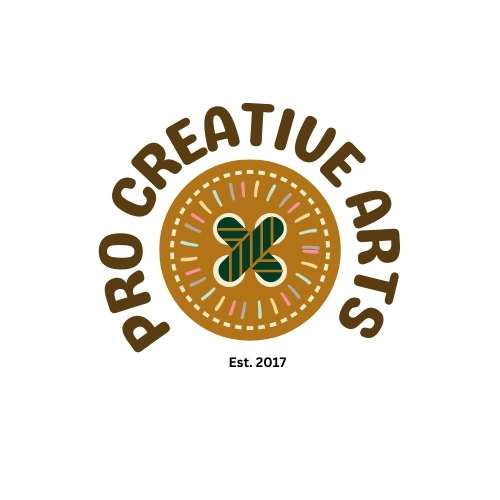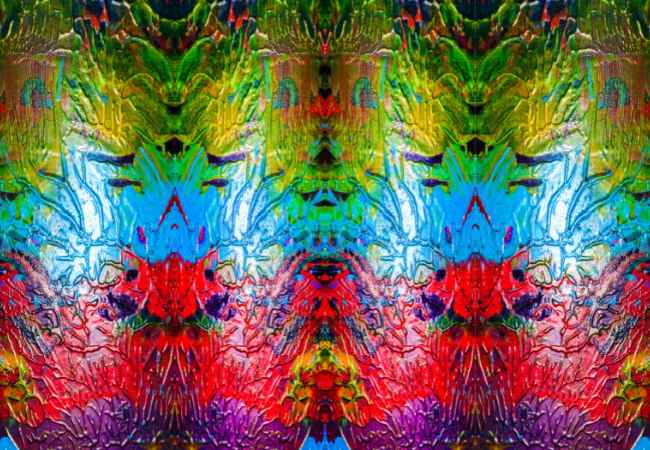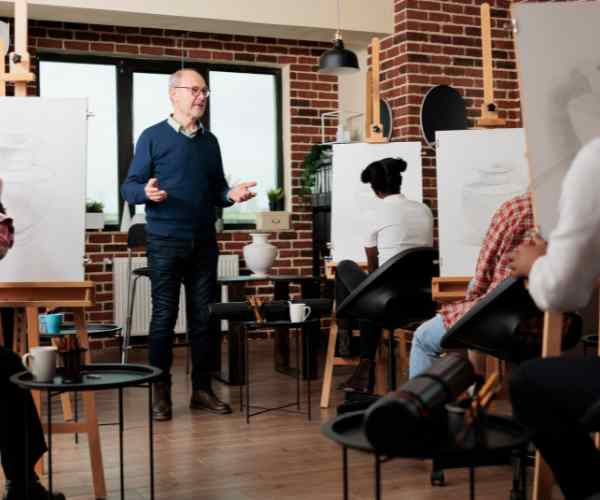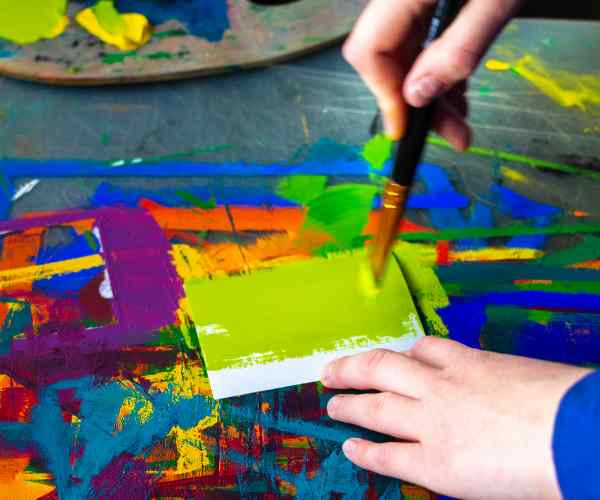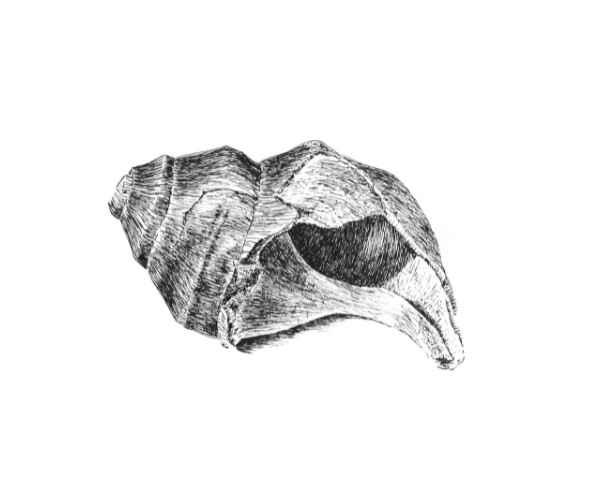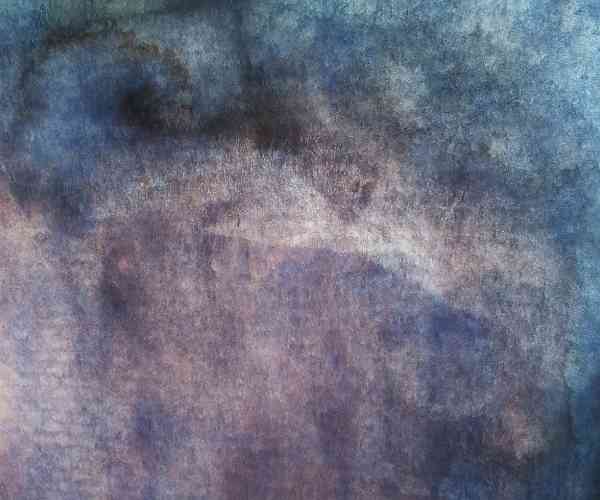Layering is the backbone of texture within any mixed media art piece. It is definitely the element that can turn a single painting into a stunning masterpiece. Once, when I was trying layering for the first time, I was completely fascinated by only a few layers of paints on a canvas.
To achieve layering, consider building a sandwich, though instead of bread you have Paper, Fabric, and Paint. In layering, it is very essential to first have a strong first layer. This could range from gesso thin coats to colored acrylic paint. After the first layer has dried off, then the real excitement happens where you can paint the layer with different paints and textures. A base for me often involves old newspapers and scrap fabric because the colors and the designs that they offer are beautiful and add layers within my creation.
Few artists like Pablo Picasso are considered to be the first artists to bring layering into multi media art. If you examine closely many of Picasso’s paintings you will see layering twist in them. There is an adventure waiting in every painting, with a new story to tell, the adventure is to locate those story on the canvas.
Let’s take “Fawn Creek” as an example. This regards the surface, which is said to consist of numerous layers consisting of cloths, paint as well as some old books, that in principle looks highly impressive and provokes deep meaning. Every single layer carries a meaning and the textures invite you over, sourcing you hand over the surface, thus exposing the process of how the surface was constructed.
Don’t be scared to using disparate materials! Incorporate acrylic paints for eye catchy hues, collages for a bit of pattern, and other materials for an extra level of intrigue. The best part about layering is the possibilities are infinite and you are able to create in ways you choose.
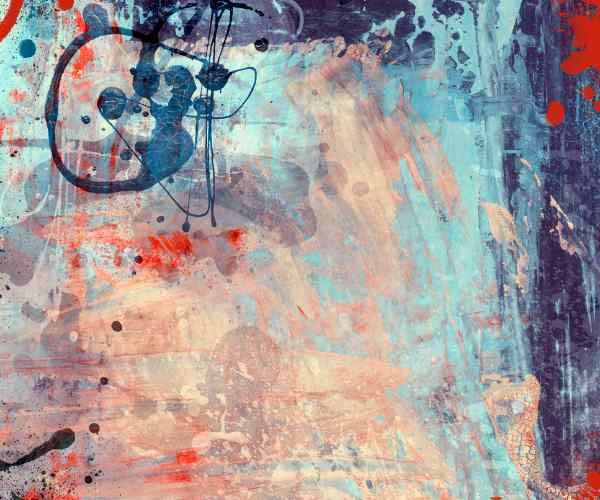
Collage elements: Adding visual and physical depth
If you would like to enhance your mixed media artwork, collage techniques are one of the easiest and most thrilling ways to do it. I hated collages until I realized how enjoyable they were to create. I vividly remember spending long hours making collages to be perfectly free while using nothing but a pair of scissors and a stack of magazines for inspiration. Cutting out images and phrases would set the perfect tone for my art pieces. In my opinion, the process of taking apart materials and combining them whether it being fabric, paper or even photographs comes off as very freeing.
Utilizing these different materials simultaneously allows room for depth and contrast within your work which ultimately grabs viewer’s attention. Additionally, mixed media collage has the biggest advantage of revamping older materials so that they don’t go to waste. Sometimes I go through my old scrapbook supplies and cut out small bits from magazines. Turning unused pieces of items into something usable is one of the greatest joy I get.
Pro tip: You don’t have to use rotors and paste as traditional collages as your only form of collage-making materials. If you dive deep enough, you would often find small bits of items that you could easily transform into collages. Textured scrapbook paper or even torn fabric can be used in collage making and photomontage. My experience of using soft material combined with rough paper only speaks volumes of how pleasing the contrast was.
As you explore, you will observe how these collage elements can enhance spatial and physical depth to your artwork. For example, applying a layer of fabric enables you to extend the sense dimension of the work even more. The viewer can touch the processes of the piece construction and that can’t be overstated.
Additionally, collage serves the purpose of narration too. There is a movie each time you decide to augment the artwork with collage since every piece can serve as a memory, a feeling or just a moment and all these turn into a rich narrative with textures and materials used. Therefore witness how collage effect can alter a simple artwork into the more texturized one — gather your devices and let your ideas go free.
Impasto Technique: The Strength Of Thick Paint.
Most of the time, when it comes to making texture with mixed media art, there’s no other I expect than impasto. Consider this: thick paint is used to cover your canvas. It’s the very nature of impasto. The process can almost be compared to sculpting with paint permitting you to form an artwork with three dimensional texture that practically begs spectators to touch it!
When I first did impasto, I remember vividly how it felt. I had been working on this giant canvas and then I dipped my palette knife in the acrylic paint. I felt this surge rushing admixture of adrenaline and joy. The feeling was akin to spreading a thick layer of icing on the grainy surface of a cake. There’s something so satisfying about the physicality of this technique!
Shall we put aside the annoyance of dealing with haughty people then? Alright then, I circumvent such individuals out of my mixed media, the use of impasto however is sophisticated and impressive. The paint can be a nice layer over other materials such as cloth or repurposed material. It compliments the smoothened surface and adds dimension to the pancake and shakes hands with the viewer.
A plethora of different artists have mixed media in their set of works which is used to enhance the normal look of the composition by embedding impasto techniques. You see those swirly and pointy structures of the paint? Those can change a 2d framed composition into a 3d rugged layered one. It’s not just a prospect of art; rather it can provide communications through the textures and patterns which are presented on the canvas.
Make sure to have fun with this technique by utilizing different tools and colors. You can use your fingers, brushes, or palette knives to manipulate the paint. But here’s a little trick: glass glitter and pigment powders can be added to the paint to make the textures stand out even more. The glimmers will catch the light, and that will in turn, create depth in quality that you do not look for; trust me.
Stenciling And Masking: Controlled Textural Patterns
Now, let’s move on to the next method of creating texture which is equally engrossing – stenciling and masking. This method gives opportunity to create controlled patterns and designs which lend structure and interest to the artwork created using mixed media.
I’ll always remember how I got introduced to stencils. There was this piece I was working on which was inspired by pop art and so I needed crisp edges to contrast against the vivid background I had. The moment I peeled away the stencil after applying and saw the seamless pattern, it was like finding treasure!
Stenciling is amazing since it helps you work with different textures. You can employ dry media such as pigment powders and acrylic paint to stencil raised patterns. Just imagine how exhilarating it is to cover the textures you have already built on the canvas with stenciled designs. That already adds an additional moving factor to your art.
Masking is also an equally effective instrument in the growing blended media repertoire. This technique permits you to keep part of the underlying layer clean while applying textures over it. That is the ideal approach to balancing the chaos and exertion of control with more components in the artwork.
Suppose I’m working on an abstract form, I will initially use masking tape to mark shapes. Then I will go over it with a contrasting color. After peeling the tape, I will have edges which are appeals and stand out against the color. This technique best suits the artists who wish to fuse classic techniques with the modern touch, much like the pop art itself.
Additional Materials for Texturizing Mixedmedia Art
Gels and Pastes – building the bulk.
Allow us to look at the few awesome materials that can improve the quality of your mixedmedia art piece! Gels in addition to pastes are a Must Have when trying to achieve thick sculptural look especially that which adds depth to the piece.
I recollect when I first came into contact with modeling paste, it was fairly mind blowing that it could be smeared using a palette knife and appear as though it was carving mountains and valleys onto a canvas. This material remains solid and keep shape thus allowing one to create textures that are touchable and difficult to ignore
Heavy gel mediums use in this context, too, is brilliant. Combine them with acrylic paints, and you can produce effects that range from smooth glass to rough porous stones. For extra effects, use pigment powders or mix in glass glitter. The shine on the rough surface is beautiful and is designed to entice the viewer.
Gel medium, paint and resin are mixed to create a sculpture I made once. There was a semblance of an inner life in the piece, which had many vibrant layers that shone in the light. This was made possible by the layers of texture added to the sculpture and the blend of the colors used in the sculpture which really made it outstanding amongst other pieces.
Textiles: Soft vs. Structured Texture
Coming to textiles – they can be used to add in soft textures and structural textures to your mixed media work of art, and they work perfectly. Incorporating fabric into my work is something I love because it adds an element of touch that improves the composition itself.
No matter if it’s rough burlap or soft silk, every fabric has got its own texture. The only downside is that they can’t be combined together. I love working with different materials like fabric and even found objects and creating unique paintings. The collision between the softness of fabric and the hardness of found objects creates a nice artwork.
I sometimes would even rip my old clothes and fabric further just to see what I can create out of them. It feels like I’m on a quest to find treasures! Recently, I was able to create some coffee-stained collages using an old denim jacket. Combining the jacket with paint and other elements in the collage was just captivating.
Tip: Remember to mix different types of fabrics in your mixed media artworks as well. Every part can add vast depth to your overall composition that combining paints alone can hardly give you.
Everyday Objects Reimagined, Dynamic Textures Transformed
The only thing left to talk about is my most favorite thing, which are found objects. Be prepared for the fun to begin! Into a mixed media, I can Rubber stamps, Thread, fabric and any other items and even use them to add texture and story.
I recall the first time when I started incorporating found objects into my work. There was a concept of telling story using material that got me fascinated. I collected things from my surroundings such as old newspapers and bottle tops and made a collage depicting my life at that particular time. The nice thing about found objects is that they come with meaning and background that can influence people’s views.
To cite Montgomery County, where a mixed media artist whom I know brilliantly exploited found materials such as newspaper cuttings and fabric leftovers to illustrate the cultural richness of the place. It’s such a wonderful way to approach making very individual works of art that have personal meaning. Every single object has the possibility of being the center of interest, and may therefore sparks discussion.
As you add to the collection of your found objects remember the story that can be woven around them. The combination of diverse textures should add different layers to the meaning and narrative of the object turning it into an intricately crafted story.
Contrasting colors and texture
In this section of the blog, I’d like to discuss two of my favorite and the most impressive components in mixed media art: contrasting colors and texture.
I have always loved color contrast, and thinking about it, I remember a piece of mixed media I created a couple of years ago. I remember using a lot of smooth and rough textured dark elements and vividly colored light ones on top of one another and wow! The way in which the light colored elements stood out against the rough ones was glorious! To put it simply, just imagine a seamless duet between colors and textures!
Making use of contrasting colors—such as light tones with dark ones or shiny items with matte ones— is sure to reveal the textured parts of your artwork more easily. This method will add movement to your piece and let every element shine. Picture an artwork with shiny gold leaf alongside rough black paint: this combination will add so much meaning to the piece that the viewers will want to spend more time examining it.
A mixture of colors in mixed media paintings can lift up a simple composition to tell a picture. For example, a bright turquoise set alongside a cracked, dark color not only highlights the texture but also brings forth emotions which are deep within making it easy for the audience to relate. It is a great way of making everything feel even more profound and interesting, almost effortlessly making the textures talk!
Textures and Monochromatic Colouring
Alternatively, you can use monochromatic colour schemes if you want a more simplistic approach to the whole atmosphere. It is a kind of beautiful calm that comes from only using a single color family. You let the textures do the talking without worrying about too many colors competing for attention.
As I recall, on one summer afternoon, I decided to work on a composition that had many shades of blue. The soft colors enabled the gentle textures of soft material and rough paper that I integrated to be noticeable. It is that ideal equilibrium that wraps up a piece of art in a calm and yet appealing manner.
Choosing a single color in your creation is essentially telling the audience, ‘Focus on my textures,’ and because of that, all the textures no matter how subtle or minute, take over as the focal point of the artwork which intricacies of your creative venture. It almost feels as though it is a dialogue between the textures, who are narrating their stories in a calm manner without the assistance of vivid colors.
But this technique suits people perfectly who wish to convey a feeling or emotion in their piece of artwork. A suitable color palette can construct a feeling of serenity and elegance, which enables viewers to delve deeper into the beauty of texture without bombarding their senses.
Mixed Media and Metallics: A Reflection of Textured Elements
What an addition it would be for your mixed media art, metallics is the next element that we should engage with it: metallics. Oh, how I love the shine provided by metallics!
Using some copper or gold leaf are some great ways to create an reflecting surface that would greatly complement the other textures in your piece. I once made a mixed media sculpture and placed a gold leaf on a dark background with heavy textures. It was fascinating how the light altered the surface, perfecting that mesmerizing effect! The sculpture seemed alive, constantly changing because of the light applied to it.
Mixed media artworks can be enhanced greatly with the usage of metallics. Such artwork pieces have the ability to look utterly different depending on the lighting from which it is viewed. How amazing is that?
When thinking about how to use metallics, consider how those metallics will pair with the textures you already have on the piece. There is nothing more appealing or eye catching than a rough, matte surface pairing alongside a smooth and shiny reflective surface. Not only that, but being able to feel the difference in surfaces can get people up close to your work and make it even more personal.
**Frequently Asked Questions:**
**What would you say are the ideal tools for texture in mixed media art?**
The tools that are deemed to be effective are well known by every artist, or at least every artist has certain tools that are considered their go-to. Some artists believe palette knives and paint brushes to be great mediums to apply mixed materials, while others would argue that an old comb or a spoon, retrieved from the garbage can, would provide an artist with better textures. In case such tools do not suit you, try wandering around the arts and crafts aisles and indulge in artisan gels or sculptural resins. They could help improve the texture as needed!
**Is it possible for me to incorporate various textures into one art piece?**
Of course! Imagine mixing all the textures you want into one piece of art, isn’t it more like painting rich tapestries onto your canvas? Combine fabric and papers into your paintings and it will surely deepen and heighten the complexity of the work. You could say textures are like a conversation, each has a different voice and when mixed together they narrate the tapestry.
How do I keep my textures from losing its form when they dry?
That is a great question! The use of thick gel mediums or modeling paste is essential as both of these products dry with a texture that is raised and helps to keep standing the textures made by you. But be careful not to over thin your materials too much as that can cause flattening. Give your textures some height!
Do I need special rematerial to achieve texture in mixed media art?
Of course not! You’d be surprised at how many everyday objects can be used to make those textures even better. Items such as sand, string or even leftovers from packaging can add textures to your mixed media work. The possibilities are endless so never hesitate to use your imagination and use what you have around you!
Conclusion
In conclusion, mixed media art is all about layering different emotions, and if you’re someone like me who enjoys exploring mixed media art, then adding texture just adds to the thrill of it. It helps to convey the message you’re trying to portray even better than before.
If you are mixing acrylic paint, adding fabric and found items, the textures you will create are going to be the essence of your art journey. So do not hesitate – let loose your imagination, and apply paint onto canvas in whichever way you desire! You may be surprised by the wonderful things you can find on such a colorful road of mixed media art.
